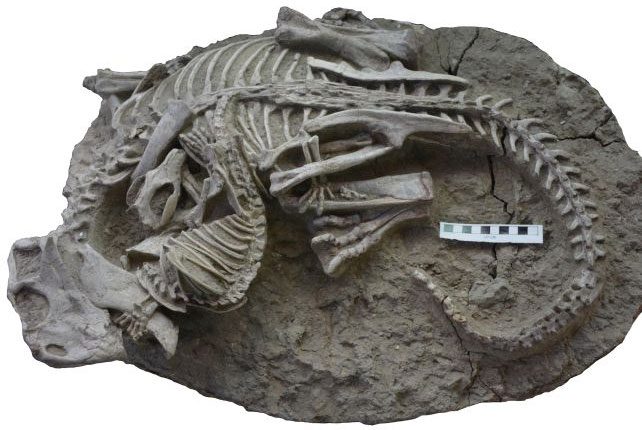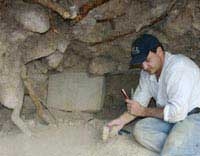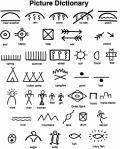The fossil of two Cretaceous monsters entwined in volcanic rock from the Yixian Formation (Liaoning, China) has revealed chilling and unbelievable details.
A sudden volcanic disaster during the Cretaceous period (145-66 million years ago) has “frozen” the moment of life and death of two dinosaurs, creating one of the most terrifying fossils in paleontological history.

Dual fossils of two Cretaceous monsters excavated in Liaoning, China – (Photo: Gang Han).
An international team of scientists led by paleontologist Gang Han from Hainan University of Science and Technology (China) studied the two skeletons to determine their “identities,” as well as to understand what truly happened in that final moment.
The results were even more astonishing than expected.
The two skeletons initially indicated that one was a dinosaur and the other a smaller animal. However, the hypothesis that the dinosaur was hunting crumbled: New analysis, recently published in the journal Science, shows that the larger dinosaur was actually the prey of the terrifying predator.
The dinosaur was identified as Psittacosaurus lujiatunensis, curled up with its ribs in the mouth filled with sharp teeth of the predator.
The beaked jaw of the dinosaur was also tightly clamped by the predator’s forefoot, while its hind foot was locked by the thigh of the antagonist.
The chilling integrity of the two skeletons also helped scientists quickly identify the “culprit”: Repenomamus robustus, an early mammal.
“We knew that Repenomamus robustus fed on smaller Psittacosaur species, but this is the first time we’ve seen evidence of a feisty animal attacking a much larger prey,” said paleontologist Jordan Mallon from the Canadian Museum of Nature, a member of the research team, as reported by Science Alert.
Upon discovering this, their first thought was that the little monster had eaten the dinosaur’s corpse.
However, a clearer analysis of the dinosaur skeleton confirmed otherwise; it was still alive when it was eaten and simply lost the battle for survival.
This finding is considered extremely significant, not only because fossils of Cretaceous mammals are quite rare but also because it clearly reveals the behavior and predation capabilities of what seemed to be the most docile creatures of this monstrous era.
Moreover, early mammals are the foundation of modern mammals, which survived the mass extinction 66 million years ago and became the dominant species in place of the dinosaurs. Understanding them means understanding more about ourselves.





















































